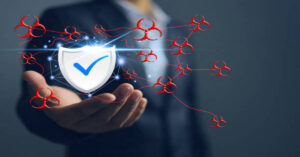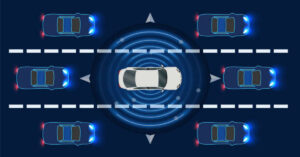The healthcare sector is undergoing an extraordinary transformation driven by technological innovation. Among the most impactful developments is patient care technology, which encompasses the diverse tools, systems, and innovations designed to enhance patient outcomes, streamline healthcare delivery, and improve overall efficiency within medical facilities. Patient care tech is not just about gadgets or devices; it represents a comprehensive ecosystem where information management, monitoring systems, automation, and digital tools work together to support medical professionals while ensuring patients receive timely, personalized, and effective care. Understanding patient care technology requires exploring its components, applications, benefits, challenges, and future trends in a way that highlights its importance for modern healthcare systems worldwide.
What Is Patient Care Technology?
Patient care technology refers to any digital, mechanical, or electronic solution specifically designed to assist healthcare providers in delivering better care to patients. These technologies may be deployed in hospitals, clinics, home care environments, or remotely, and they include everything from electronic health records (EHR) and telemedicine systems to advanced monitoring devices and AI-powered diagnostics. The primary goal is to improve patient outcomes, increase safety, optimize workflows, and enhance the patient experience.
Unlike traditional healthcare practices, patient care technology allows for real-time monitoring, predictive analytics, personalized interventions, and remote management, which collectively reduce errors, prevent complications, and support informed clinical decision-making. Furthermore, it emphasizes a patient-centric approach where individual needs, preferences, and conditions guide care protocols, making healthcare more efficient, data-driven, and responsive.
Core Components of Patient Care Technology
Patient care technology is a broad concept, but it can be divided into several core components, each playing a critical role in modern healthcare delivery:
1. Patient Monitoring Systems
These systems continuously track vital signs such as heart rate, blood pressure, oxygen saturation, and temperature. Advanced patient monitoring devices now include wearable sensors and implantable devices that transmit data in real-time to medical professionals, enabling early detection of anomalies and immediate intervention.
2. Electronic Health Records (EHR)
EHRs are digital versions of patients’ paper charts. They provide centralized, accessible, and secure medical histories, including medications, lab results, imaging, allergies, and treatment plans. EHRs facilitate collaboration among multiple specialists and reduce redundant testing or medical errors, improving efficiency and patient safety.
3. Telemedicine and Remote Care
Telemedicine platforms allow healthcare providers to conduct consultations remotely using video conferencing, chat interfaces, or dedicated health apps. Patients can receive advice, prescriptions, and follow-up care without traveling to clinics, which is particularly beneficial for those in rural or underserved areas.
4. Clinical Decision Support Systems (CDSS)
These are software solutions integrated with EHRs to provide evidence-based recommendations, alerts, or reminders to clinicians. CDSS helps reduce human errors, improve diagnostic accuracy, and ensure adherence to best practice guidelines.
5. AI and Predictive Analytics
Artificial intelligence enables predictive analysis of patient data to anticipate complications, readmission risks, or disease progression. For example, AI algorithms can analyze vast amounts of patient information to identify subtle trends that might escape human observation, facilitating early intervention.
6. Mobile Health (mHealth) Applications
mHealth apps allow patients to track their own health metrics, receive reminders for medication, or schedule appointments. These apps empower patients to actively participate in their own care and maintain consistent communication with healthcare providers.
7. Robotics and Automation
Robotic systems assist with surgeries, medication delivery, and patient mobility. Automation in hospitals reduces repetitive tasks, such as lab data entry or pharmacy management, freeing medical staff to focus on direct patient care.
Benefits of Patient Care Technology
Integrating patient care technology into healthcare systems provides numerous benefits for both patients and providers. These benefits are not merely operational but translate into measurable improvements in outcomes and satisfaction.
| Benefit | Explanation |
|---|---|
| Improved Patient Safety | Continuous monitoring and alerts reduce risks of complications, falls, or medication errors. |
| Enhanced Patient Engagement | mHealth apps and telemedicine enable patients to participate actively in their care. |
| Efficient Resource Utilization | Automation and AI optimize workflow, allowing staff to focus on critical tasks. |
| Data-Driven Decisions | Analytics and EHR integration support evidence-based medical decisions. |
| Remote Access to Care | Telehealth services provide quality care to underserved and remote populations. |
| Reduced Hospital Readmissions | Predictive tools identify high-risk patients for proactive management. |
| Cost Savings | Optimized workflows and reduced errors decrease overall healthcare expenditures. |
Patient care technology also supports interdisciplinary collaboration by ensuring that all care team members have access to the same updated patient data. This is crucial in complex care scenarios such as oncology, cardiology, or post-operative recovery.
Applications of Patient Care Technology
Patient care technology has applications across a wide spectrum of healthcare settings. Its versatility ensures that both acute and chronic patient needs are addressed effectively.
1. Hospitals and Clinics
In hospitals, patient care technology enables ICU monitoring, automated medication dispensing, surgical precision robotics, and EHR integration. Critical care units rely heavily on real-time monitoring devices that alert staff to changes in patient conditions, reducing mortality rates and improving recovery outcomes.
2. Home Healthcare
Wearables, remote monitoring systems, and telemedicine platforms allow patients to recover at home while still being closely monitored by medical professionals. This reduces the burden on hospitals and supports chronic disease management, such as diabetes, hypertension, or heart failure.
3. Rehabilitation and Therapy
Technology enhances physiotherapy, occupational therapy, and rehabilitation through motion sensors, AI-driven exercise plans, and virtual reality environments that make therapy more engaging and measurable.
4. Elderly Care
For aging populations, patient care technology ensures fall detection, medication reminders, and health tracking, enabling seniors to maintain independence while reducing caregiver stress.
5. Emergency Care
In emergency departments, patient care tech streamlines triage, ensures faster diagnostics, and allows real-time communication among multidisciplinary teams, improving response times in critical situations.
6. Chronic Disease Management
Continuous monitoring systems and predictive analytics help track disease progression, manage medications, and detect early signs of deterioration, ensuring timely interventions.
Challenges in Implementing Patient Care Technology
Despite its benefits, implementing patient care technology comes with challenges that healthcare institutions must navigate.
| Challenge | Details |
|---|---|
| High Initial Costs | Purchasing, integrating, and maintaining technology systems require significant investment. |
| Data Privacy Concerns | Storing sensitive patient data digitally increases vulnerability to cyberattacks. |
| Staff Training | Healthcare professionals must be trained to use complex devices and software effectively. |
| Integration Issues | Ensuring that all tech components work seamlessly with EHRs and hospital systems is complex. |
| Technology Acceptance | Resistance from staff or patients can hinder adoption of new technologies. |
| Reliability and Maintenance | Continuous operation of monitoring devices and systems is essential; technical failures can be critical. |
| Regulatory Compliance | Technologies must comply with health regulations and data protection laws. |
These challenges require a combination of investment, policy-making, and change management to ensure that patient care technology is both effective and sustainable.
Emerging Trends in Patient Care Tech
The future of patient care technology promises more advanced, intelligent, and personalized solutions. Key emerging trends include:
- Artificial Intelligence Integration – AI will increasingly drive diagnostics, predictive analysis, and automated decision-making.
- Wearable and Implantable Devices – More advanced wearables will allow continuous monitoring with greater accuracy, and implantable devices will offer long-term patient tracking.
- Blockchain for Medical Records – Blockchain technology ensures secure, tamper-proof storage of patient data across hospitals and care providers.
- Virtual and Augmented Reality – VR and AR will enhance medical training, surgical planning, and patient rehabilitation exercises.
- Personalized Medicine – Advanced analytics and genomics integration will allow treatments tailored to individual patient profiles.
- Internet of Medical Things (IoMT) – Connected devices will streamline monitoring, alerting, and automated responses to patient needs.
- Telehealth Expansion – Telemedicine will continue to grow, incorporating AI chatbots, remote diagnostics, and virtual checkups for broader accessibility.
These trends indicate that patient care technology will not only support clinicians but will empower patients to become more engaged and proactive in managing their health.
Best Practices for Implementing Patient Care Technology
Successful integration of patient care technology requires careful planning and adherence to best practices:
- Stakeholder Engagement: Involve clinicians, IT specialists, and patients in technology selection and implementation.
- Training Programs: Provide continuous education to ensure staff can use technology efficiently and safely.
- Data Security Measures: Implement encryption, secure access controls, and regular audits to protect patient data.
- Scalability and Flexibility: Choose systems that can adapt to changing healthcare needs and future technological advancements.
- Continuous Evaluation: Monitor performance, outcomes, and user satisfaction to optimize technology usage.
- Integration with EHRs: Ensure seamless data flow across systems for holistic patient management.
- Patient Education: Teach patients how to use apps, wearables, and telemedicine services effectively.
Impact of Patient Care Tech on Healthcare Outcomes
The impact of patient care technology can be measured in several key areas:
- Reduced Medical Errors: Automated alerts and monitoring reduce preventable mistakes.
- Faster Response Times: Real-time monitoring and predictive analytics allow immediate interventions.
- Higher Patient Satisfaction: Personalized care, telehealth options, and engagement tools enhance the patient experience.
- Improved Chronic Disease Management: Continuous monitoring helps manage conditions like diabetes, heart disease, and COPD effectively.
- Enhanced Efficiency: Workflow automation allows healthcare providers to spend more time on patient care rather than administrative tasks.
- Data-Driven Decisions: Analytics provide actionable insights for treatment adjustments and resource allocation.
Patient Care Technology in Numbers (Illustrative Table)
| Technology | Application | Impact Metric |
|---|---|---|
| Wearable Heart Monitors | Cardiovascular monitoring | 30% reduction in hospital readmissions |
| EHR Systems | Patient record management | 40% reduction in duplicate tests |
| Telemedicine Platforms | Remote consultations | 25% increase in patient reach |
| AI Diagnostics | Predictive analytics | 20% improved early detection rates |
| Medication Management Apps | Adherence reminders | 35% better patient compliance |
| ICU Monitoring Systems | Critical care surveillance | 50% faster response to emergencies |
Conclusion
Patient care technology represents a profound evolution in healthcare delivery. From real-time monitoring and AI-powered diagnostics to telemedicine and patient engagement tools, it transforms the way healthcare professionals interact with patients, make decisions, and manage resources. The integration of such technologies enhances patient safety, optimizes workflows, and delivers data-driven insights that ultimately improve outcomes. Despite implementation challenges such as costs, privacy, and staff training, the benefits of patient care technology are undeniable.
Looking ahead, continued innovation and adoption will make healthcare more accessible, personalized, and efficient. By embracing these technologies, healthcare systems can create a sustainable, patient-centered environment that improves both quality of care and patient satisfaction. The future of patient care lies in the seamless collaboration between technology, clinicians, and patients, ensuring a healthier, more informed, and more connected world.
Frequently Asked Questions (FAQs)
- What is patient care technology?
It encompasses digital, mechanical, and electronic solutions that support healthcare providers in improving patient outcomes and workflow efficiency. - How does patient care technology improve patient safety?
Through continuous monitoring, automated alerts, predictive analytics, and data-driven decision support systems that reduce errors and complications. - Can patients use these technologies at home?
Yes, wearables, mHealth apps, and telemedicine platforms enable patients to manage their health remotely while maintaining provider oversight. - What are the challenges of implementing patient care technology?
Challenges include high costs, data privacy concerns, staff training, system integration, and technology adoption resistance. - What is the future of patient care technology?
Future trends include AI integration, personalized medicine, virtual reality applications, IoMT devices, blockchain-secured records, and expanded telehealth services.









